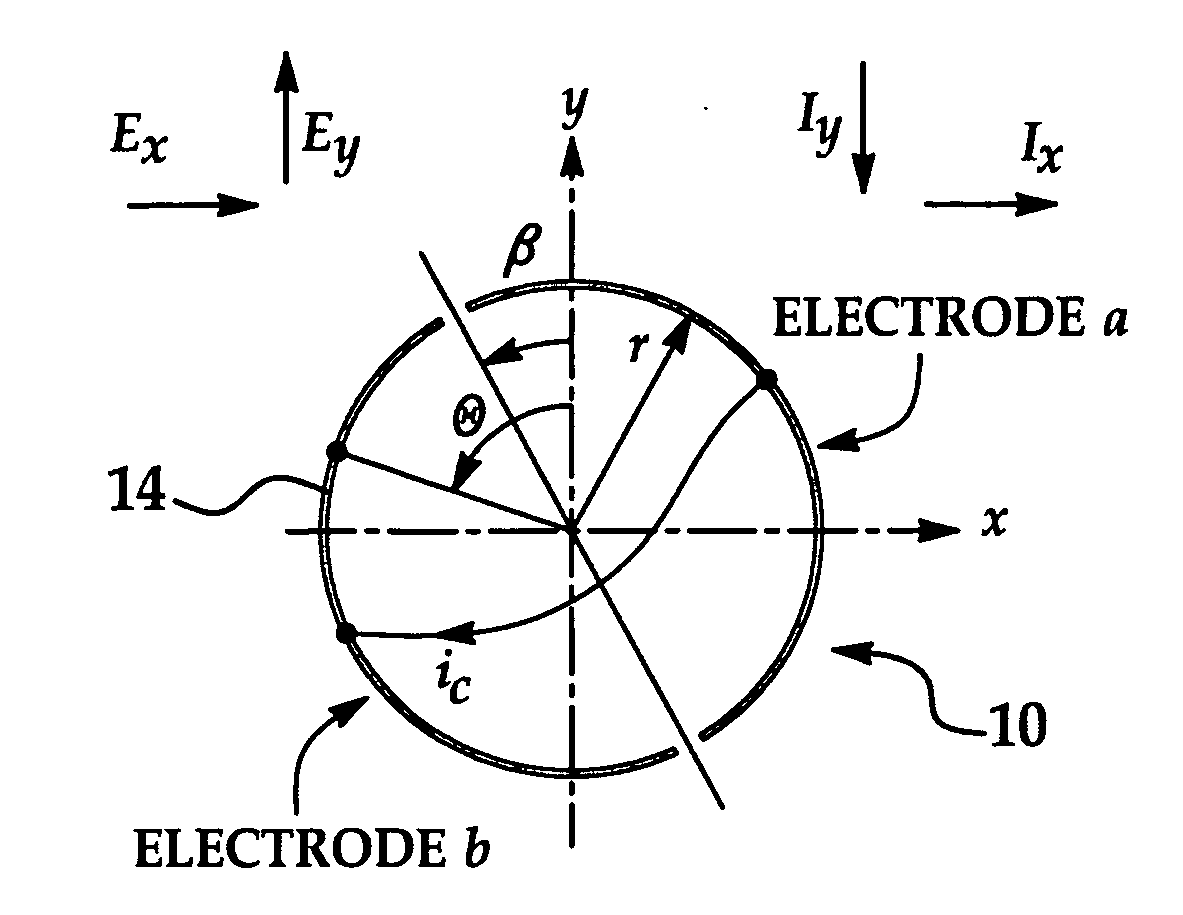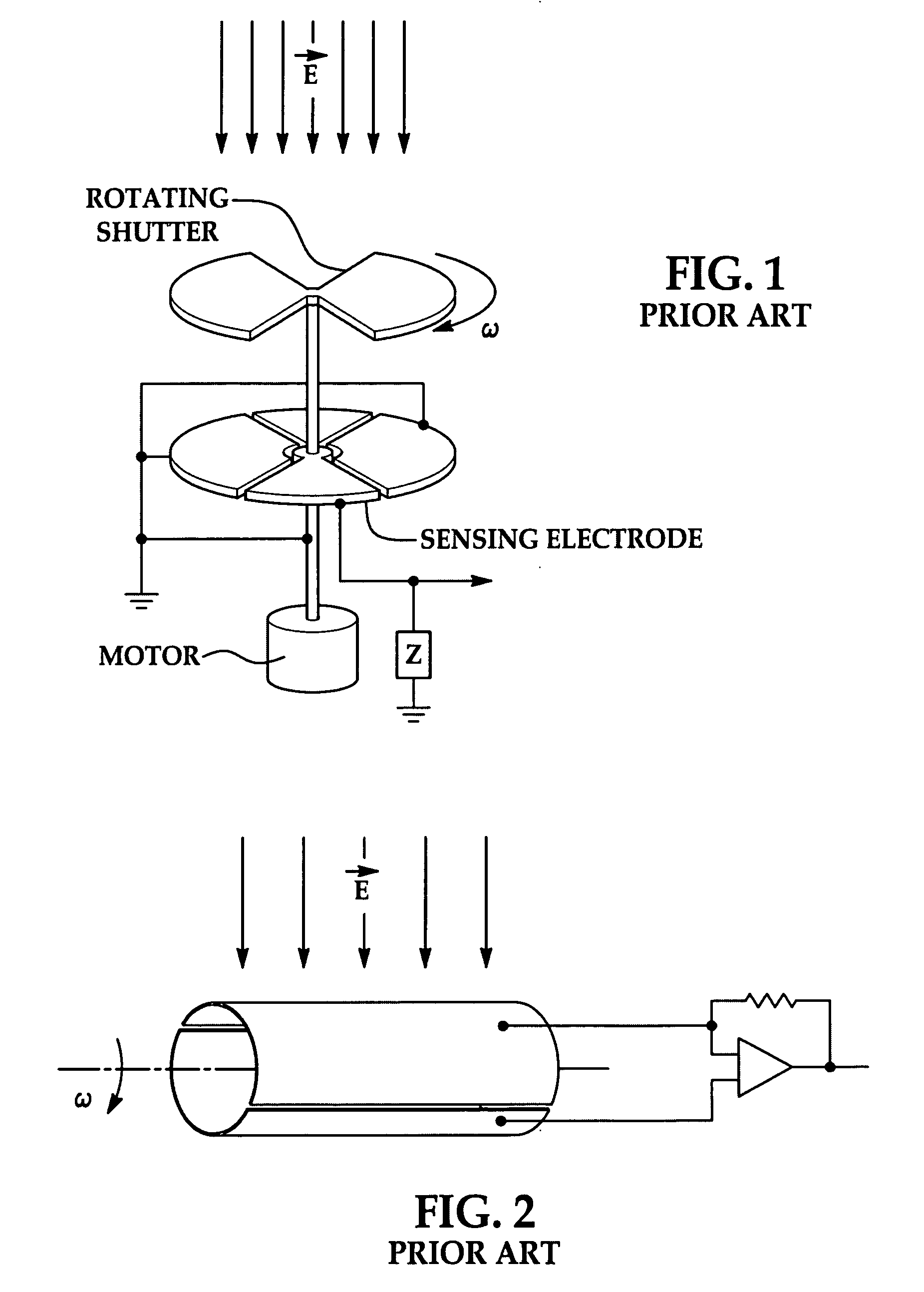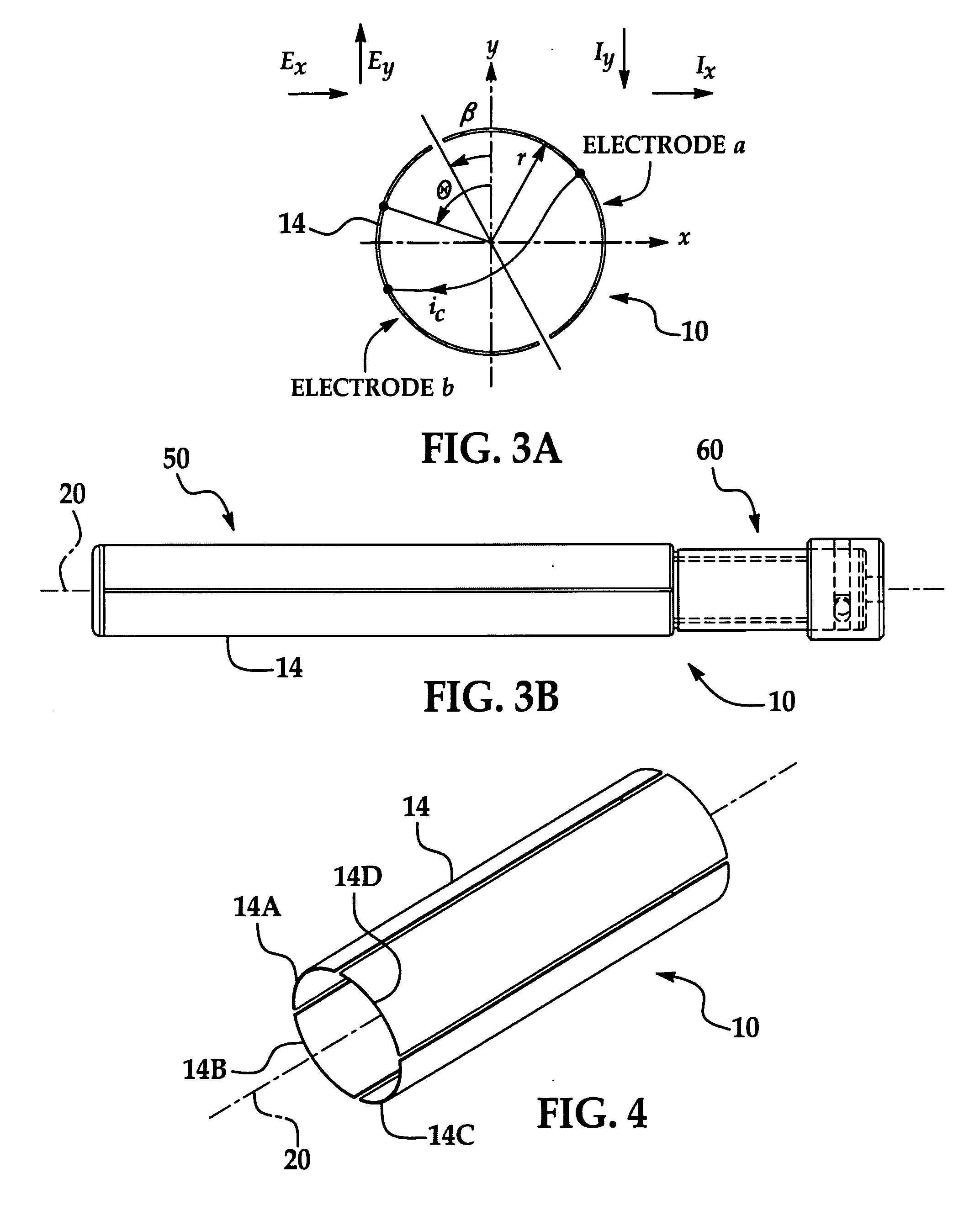Rotating electric-field sensor
a sensor and electric field technology, applied in the field of electric field sensors, can solve the problems of shutter type field mills distorting the electric field, and not finding a wide range of applications
- Summary
- Abstract
- Description
- Claims
- Application Information
AI Technical Summary
Benefits of technology
Problems solved by technology
Method used
Image
Examples
Embodiment Construction
[0032]Referring to the FIGS. 3A, 3B, 4 and 5, a rotating electric-field sensor or instrument 10 is provided. The present invention is capable of measuring vector electric-fields ranging from DC to an arbitrary upper frequency not limited by the rotation rate with higher accuracy and sensitivity than prior methods. This is accomplished by the use of a combination of quadrature modulation and phase sensitive quadrature demodulation, implemented in a processor or digital signal processor 12. Contrary to previous sensors, the electric-field sensor 10 of the present invention can operate continuously without the need for brushes or internal batteries, in either grounded or isolated versions, making it suitable to industrial applications. In addition, an electric-field sensor 10 comprised of a single rotating electrode operating sequentially at two different rotation rates can be used to distinguish the effects of the ambient space field from that due to the collision of charged particles...
PUM
 Login to View More
Login to View More Abstract
Description
Claims
Application Information
 Login to View More
Login to View More - R&D
- Intellectual Property
- Life Sciences
- Materials
- Tech Scout
- Unparalleled Data Quality
- Higher Quality Content
- 60% Fewer Hallucinations
Browse by: Latest US Patents, China's latest patents, Technical Efficacy Thesaurus, Application Domain, Technology Topic, Popular Technical Reports.
© 2025 PatSnap. All rights reserved.Legal|Privacy policy|Modern Slavery Act Transparency Statement|Sitemap|About US| Contact US: help@patsnap.com



